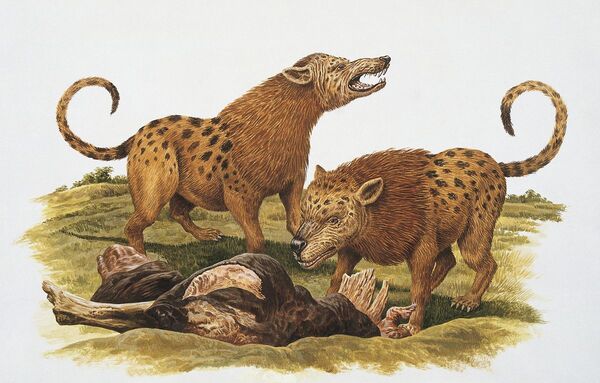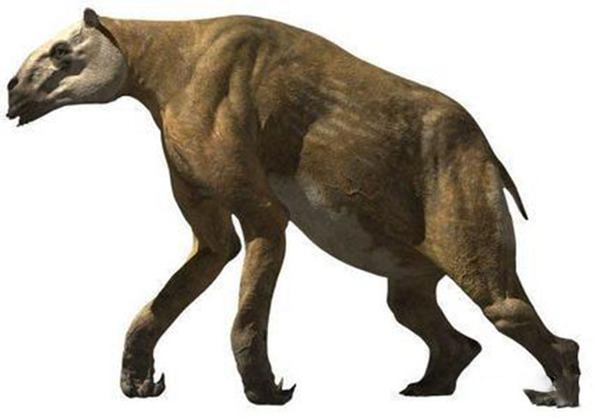The Chalicothere is an extinct mammal that roamed the Earth millions of years ago, but few people today are aware of this fascinating creature. With a unique appearance and an intriguing evolutionary background, the Chalicothere stands out among prehistoric mammals. In this article, we’ll explore the history, biology, and significance of the Chalicothere, ensuring that anyone curious about this ancient beast can learn all about it.

Chalicotheres were part of the now-extinct family Chalicotheriidae, related to modern horses, rhinoceroses, and tapirs within the order Perissodactyla. These herbivorous mammals lived from the Eocene to the Pleistocene epoch, around 46 million to 781,000 years ago. Fossils of Chalicotheres have been found in various parts of the world, including Africa, Asia, Europe, and North America.
One of the most distinctive features of the Chalicothere was its unusual body structure. While it may have resembled other large mammals at first glance, it had long, clawed forelimbs and shorter hind limbs, making it look quite different from most herbivores of its time. These claws were not used for hunting, but rather for foraging, likely helping the Chalicothere strip leaves from trees or dig for roots.
The Chalicothere’s body was also adapted for a knuckle-walking posture, similar to modern gorillas. This peculiar feature helped support its large size and weight while allowing it to use its claws without damaging them while walking.
Chalicotheres provide a unique glimpse into the evolutionary diversity of large herbivores. While they are part of the perissodactyl family, their body structure differs significantly from their modern relatives. This divergence in body form highlights the diverse ways herbivorous mammals evolved to survive in different environments. The Chalicothere’s combination of long arms and claws suggests it may have lived in forested environments, where it could browse on foliage from trees, much like how giraffes do today.
The family Chalicotheriidae consists of several genera, with the most well-known being Moropus, Anisodon, and Tylocephalonyx. Each of these genera had its own adaptations but shared the common characteristics of clawed forelimbs and large, stocky bodies.
Moropus is perhaps the most famous Chalicothere and is known for its fossils found in North America. This large species had powerful limbs and claws, likely used for pulling down branches or digging for tubers.
Anisodon, found primarily in Europe, also displayed the knuckle-walking posture. Its fossils suggest it lived in densely forested areas, where it could take advantage of abundant plant life.
Tylocephalonyx is a rarer species of Chalicothere that lived in the Miocene epoch and was notable for its robust skull.
Chalicotheres were herbivores, but their diet was quite different from that of other large plant-eaters like horses or rhinoceroses. Their claws suggest that they likely fed on tough vegetation, such as tree leaves, bark, and possibly roots. Some scientists believe Chalicotheres were similar in behavior to modern-day sloths, using their claws to reach high branches or to dig for food.
Because of their clawed limbs, they were probably slower and more deliberate in their movements, relying on their size and the dense forests they inhabited for protection from predators. Their large bodies and claws would have made them formidable against potential threats.
Like many large prehistoric mammals, Chalicotheres eventually became extinct. While the exact reasons are not entirely known, changing climates and the disappearance of forested environments likely played a role. As grasslands expanded and forests shrank, the Chalicothere’s specialized feeding habits may have become less viable, leading to their decline.
Additionally, competition with more adaptable herbivores, combined with predation pressures from evolving carnivores, may have contributed to their extinction.
Fossilized remains of Chalicotheres have been found all over the world, with significant discoveries in North America, Europe, Asia, and Africa. These fossils have provided crucial insights into the anatomy and lifestyle of these unique creatures. The Agate Fossil Beds National Monument in Nebraska, USA, is one of the most famous sites where Chalicothere fossils have been uncovered, offering a glimpse into the ancient environments these animals once inhabited.
While Chalicotheres are long extinct, they hold an important place in the story of mammalian evolution. Their unique anatomy, specialized diet, and the clues they leave behind in fossils make them a subject of interest for paleontologists and anyone fascinated by the Earth’s ancient past.
In popular culture, Chalicotheres have not yet achieved the fame of dinosaurs or saber-toothed cats, but they are slowly gaining recognition among enthusiasts of prehistoric life. As more discoveries are made and knowledge about these animals spreads, the Chalicothere’s place in our understanding of Earth’s history continues to grow.

The Chalicothere is a prime example of the fascinating diversity of prehistoric life. With its clawed forelimbs, knuckle-walking posture, and unique diet, this extinct mammal stands out as a creature unlike any other. Though it may not be as well-known as other prehistoric animals, the Chalicothere offers valuable insights into evolution, adaptation, and the ecosystems of the past. If you’re interested in learning more about unusual ancient mammals, the Chalicothere is definitely worth exploring!
animal tags: Chalicothere
We created this article in conjunction with AI technology, then made sure it was fact-checked and edited by a Animals Top editor.